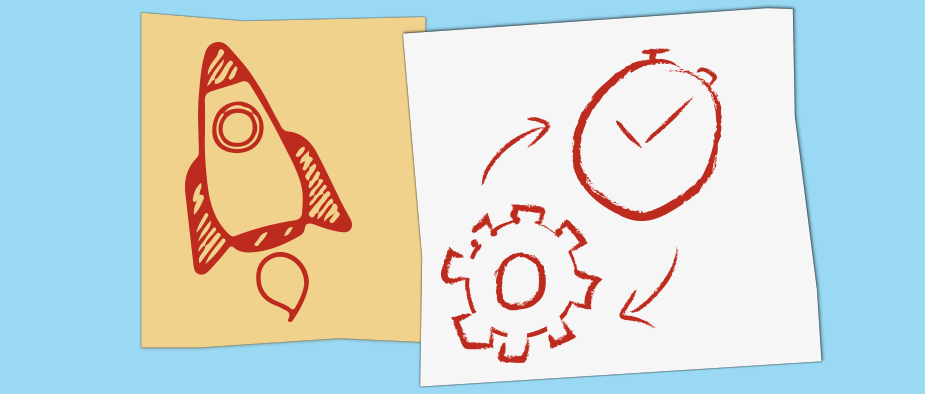
18 Proven Productivity Tips for Freelancers, Bloggers, & Entrepreneurs
In this post, I want to lay out the best productivity tips, tricks, and hacks for freelancers, bloggers, and entrepreneurs that I have learned over the years.
Being a self-employed freelance writer and online marketer for more than a decade, I have a lot of experience working on my own and making things happen. Doing so needs a lot of discipline and self motivation. However, I have also found that you can not get by on pure willpower alone. In the long run, trying to do so is likely to leave you frustrated and burned out.
During my career, I have tried out many different routines, tools, and techniques to keep myself productive. I have also read a great number of books and blog articles on that topic.
Below, I try to distill everything I know down to the very best productivity tips and hacks that keep me going as a freelance blogger and entrepreneur. They allow me to get things done without being stressed out all the time and hating my life. I hope they can do the same for you.
1. Work in Sprints and Take Regular Breaks
A lot of people are surprised to hear that I only work 20 to 30 minutes at a time. I use Toggl (one of my favorite online-marketing tools) to track how much time I work and on which tasks in my browser. When 20 or 30 minutes have elapsed, I stop, stand up, and take a break.
This approach is based on the Pomodoro Technique, named after the tomato-shaped kitchen timer its inventor used for tracking his time. It’s principles are pretty simple:
- Pick a task that you want to work on.
- Set a timer (typically for 25 minutes) and start working. Focus only on this particular task, nothing else.
- When the timer goes off, stop and take a five- to ten-minute break.
- Then, return to the task for another timed work sprint.
- After every four intervals, take a longer break of 20 to 30 minutes. Then, repeat steps 1 to 5.
- If you finish the chosen task, pick the next one on your list.
That’s it. Pretty simple, right? But it works.
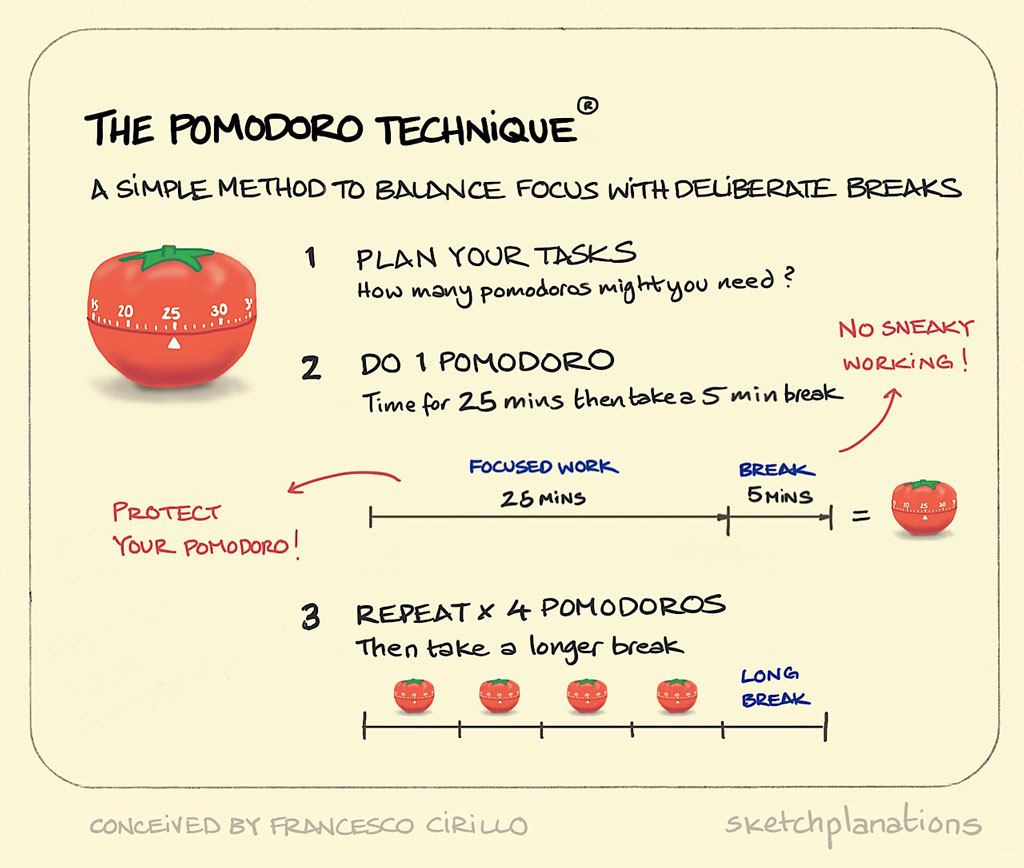
But Wait, There Is More
During the breaks I often do something mindless like empty the dishwasher, fold some clothes, or simply sit in the sun on the balcony. I am also not super rigid about the application of this. If I am totally in the zone, I will sometimes go up to 45 minutes or an hour. However, I usually stay in the 20- to 30-minute range.
Working this way achieves several things: It keeps you focused (more on single tasking soon), has breaks automatically built in (that you otherwise might not take), and combats overwhelm and procrastination (because you can always work on one thing for 20 minutes, right?).
I have found that it’s much easier to get things done like this than trying to work in larger chunks. It’s also a proven and popular technique. For similar approaches, check alternatives like 52/17 or (10+2)*5 to see if they work better for you.
2. Respect Your Own Schedule
Many of us become entrepreneurs and freelancers in order to set our own schedule. However, we then make the mistake of not figuring out what our ideal timetable actually is. Instead, we adhere to the 9-to-5 that everyone else does. However, when you take the time to figure out when you can do your best work and when is the best time to do which kind of work, it can help you get a lot more done with less stress.
What’s Your Most Productive Time of Day?
What I mean by that is multiple things. First of all, figure out when your most productive time is. For example, I am an absolute early bird. I do my best work in the morning and I am way more productive before noon than after.
My wife, on the other hand, is a night owl. She likes to sleep in but has no problems doing work until late at night (ugh!).
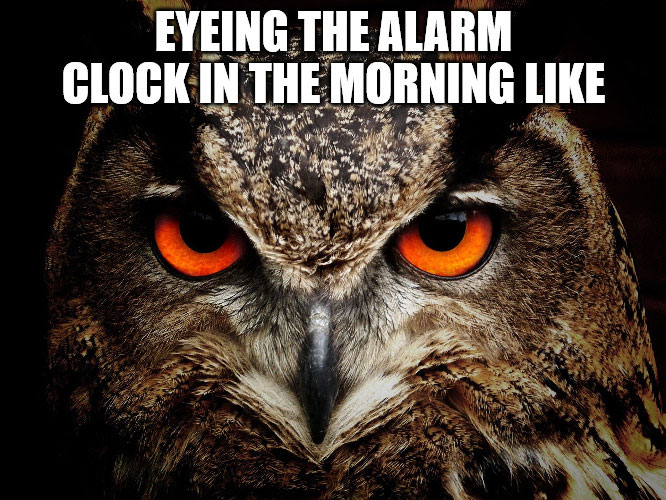
So, the first thing you should figure out for yourself is what your general productivity schedule looks like. At what time do you have the most energy and when are you most motivated?
Are Certain Types of Work Easier at Different Times?
Secondly, you might have different times for different kind of work. For instance, I have about three hours of nose-to-the-grindstone writing work in me every day. After that, my brain tends to get tired. Therefore, I try to do this kind of work first in the day and occupy my mornings with it.
Sometime after lunch, I am spent and stop. However, at this point I can still do less thinking-intensive tasks like cropping screenshots, filling my social media channels, or writing invoices. So that’s what I try to reserve for the afternoons.
If I tried to do this the other way around, I would spend my most energetic period on tasks that I can do half asleep and vice versa. Knowing that I function this way helps me both get things done and not figuratively bang my head against the wall while I do it.
In short, work when you can be productive, not when you think people expect it from you. It takes a little time to figure out what this means for you. However, just experiment a bit and you will find what workflow works best for you.
3. Set Monthly, Weekly, Daily Goals
One of the best productivity tips for freelancers is to have a plan. When working for yourself, there is usually a lot of things vying for your attention and a lot of stuff that you could be doing. However, seeing as your energy is finite, if you don’t sit down and think about where you want to go with your efforts, it’s easy spend it on the wrong tasks.
In addition, setting yourself goals and writing out how you will achieve them makes it more likely that you will follow through. In one study, people who wrote down exactly when and where they were going to exercise were almost three times more likely to do it than people who did not formalize their intention in this way.
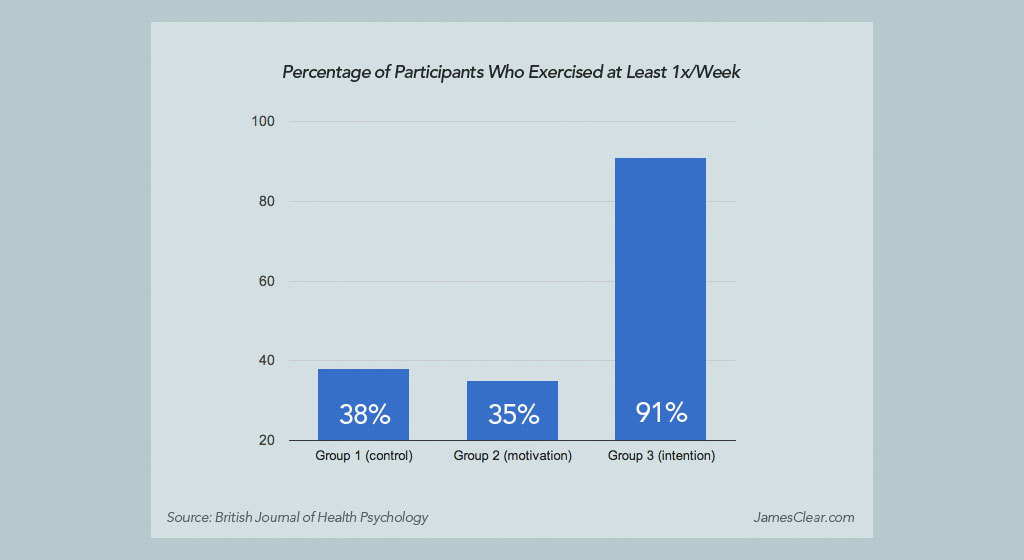
Therefore, I encourage you to write out some goals. You don’t have to be super rigid about it. However, knowing what you are going to do and aiming for will help you focus on what matters.
The first thing I do is write down what I want to achieve each month at the beginning of it. I note how many and which articles I want to write and other business goals I want to achieve. Then, I break it down to weekly goals and then again how it translates to daily to-do lists.
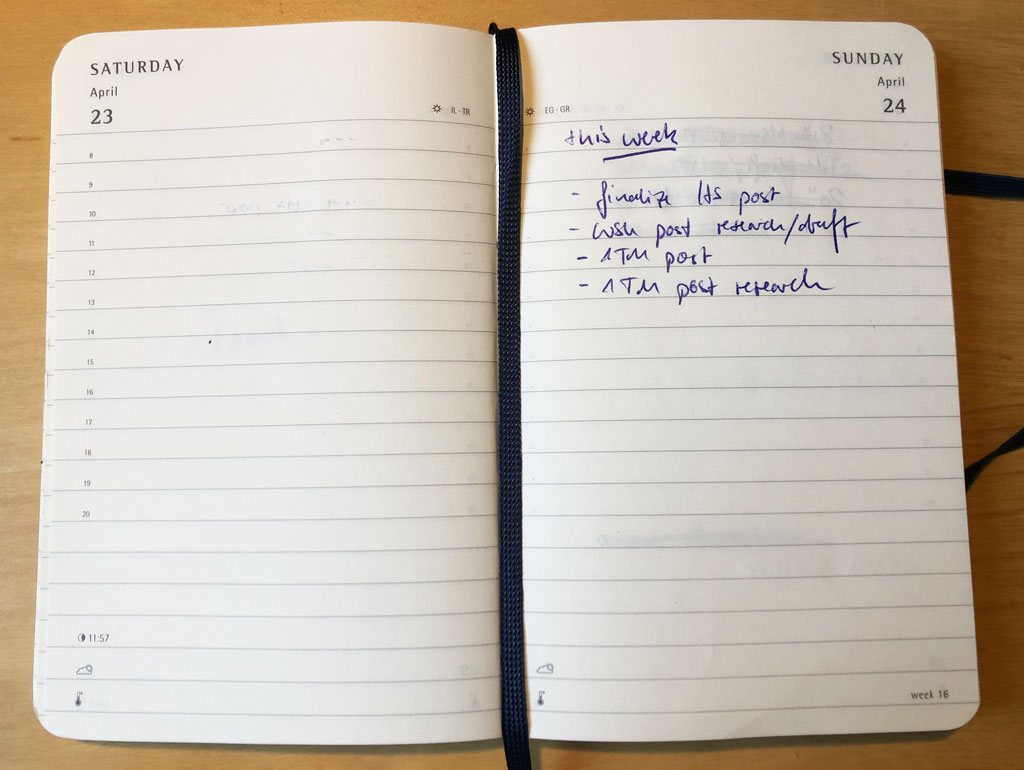
After that, at the beginning of the work day, I often quickly review whether what I have on the docket ties in with what needs to be done at the moment. After all, things can change and priorities can shift, so you need to allow for some flexibility.
4. Set Priorities
Speaking of which, I try to never have more than one to three high-priority tasks on my list per day. I found that if I schedule more than that, it usually leads to overwhelm, stress, and procrastination. So, in order to be able to determine what you want to do, I needed to learn to prioritize.
How do you do that?
For daily goals, I sit down and ask myself “which one to three tasks, if I accomplish them today, will make me feel like I had a productive day?” (this is shamelessly stolen from Tim Ferriss for those who recognize it). Also, I try to do the most critical tasks first, as my energy levels are higher early in the day than later.
How to Prioritize
Priorities can be set in different ways. Sometimes something is simply urgent, like a deadline for an article that is approaching. Other times, it will be that accomplishing this one thing will make the most impact in reaching your personal goals and give you satisfaction and motivation.
You have to find the right balance here. It’s important that you both do things that are prudent (because they are good for your career) and those that are fun and relaxing (because they will keep you motivated to keep going). If you only ever do those things that you “have” to do and not also those that you want, you will quickly start hating your life (trust me, I’ve been there). You are not a robot, don’t try to live and work like one. This will also be a bit of a theme in this article.
By the way, my favorite tool to do this kind of planning is good old-fashioned pen and paper. I do all my goal-setting and planning in a Moleskine Daily Planner. Of course, can also use to-do list apps but I personally use every excuse I can to not be staring at a screen.
5. Eliminate Distractions
Distractions are the biggest killer of focus and productivity. Nothing will drain your mental capacity and motivation faster than constant interruptions. Therefore, keeping them to a minimum is one of the most essential freelancer productivity tips.
Here are a couple ways that I try to do that and that I can recommend:
- Clean up your desk so that you have order in front of you and only see things you need for work.
- Disable all notifications on your phone that are not absolutely crucial.
- In addition, set your phone to silent and put it facedown out of immediate reach somewhere.
- On your computer, switch off email and other notifications. Check your messages at certain intervals instead (more on that below).
- For those apps where you have to be available, set yourself to away or similar so that others don’t consider you on call.
- Identify websites where you waste a lot of time and that you use for procrastination. Then block them (at least during work hours). Tools for that are Cold Turkey (this is what I use), Freedom, and LeechBlock (browser extension). Personally, I also eliminated the Facebook News Feed using this browser extension, which is also available for Chrome.
- If you live with other people (like your family), close the door to your office and/or make arrangements that you shouldn’t be disturbed during certain times.
In short, set systems in place that make it very hard for you to be interrupted or interrupt yourself. Fewer distractions means more focus and brain power to work on the things that really matter.
You might be struggling with taking these steps because we are living in a culture where seemingly everyone needs to be available at all times. However, don’t worry, most things aren’t as urgent or important as they seem. Nothing bad will happen if you are not constantly reachable for everybody.
6. Set Realistic Deadlines
Setting deadlines is a skill that is crucial for any freelancer, blogger, and entrepreneur. Without it, you can’t make any reliable promises to clients and or properly plan anything.
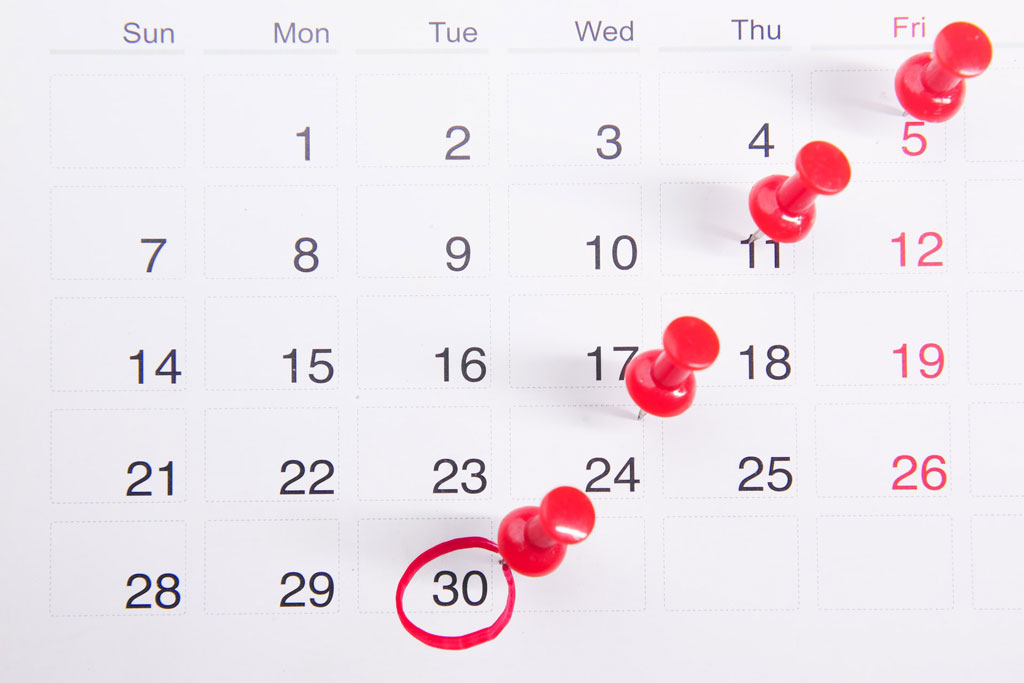
However, in my experience, most people (including myself) are notoriously bad at estimating how long a particular task is going to take. As a consequence, we often end up having to rush things because a too-tight deadline is approaching.
To get to a realistic number, I personally now use the following formula:
- Write out the tasks that you anticipate you need to accomplish to reach your goal.
- Estimate how long you think you will need for each task, then add that time together.
- Once you have the total, take that and add 50 percent on top. The result is your estimate.
Sounds excessive, I know. However, in my experience it usually comes out as more accurate than the initial estimate. Especially when things go wrong (which they will inevitably do sometimes). You can even give yourself a little more buffer at the end.
Try it out, I promise will find yourself more on time than you did before.
7. Create Blueprints for Recurring Tasks
I hate doing taxes. It’s a topic I have no interest in whatsoever. At the same time, I also know that it’s a necessity for running a business (and being an adult, at that). So, the first thing I did when I started making enough money was to hire someone to do my taxes for me.
Yet, I still need to do the preparations so they can do their job (like collect receipts, bank statements, etc.). And, due to my lack of interest in this topic, I basically always forget what exactly is part of that process. As a consequence, by the time tax season comes around, I pretty much have to start from scratch.
To combat this, at some point I simply documented what I have to do and made a checklist for myself. Now, when I need to do taxes, I just find the blueprint in my Evernote account and go through it. If something changes in the tax process, I also make sure to update the blueprint.
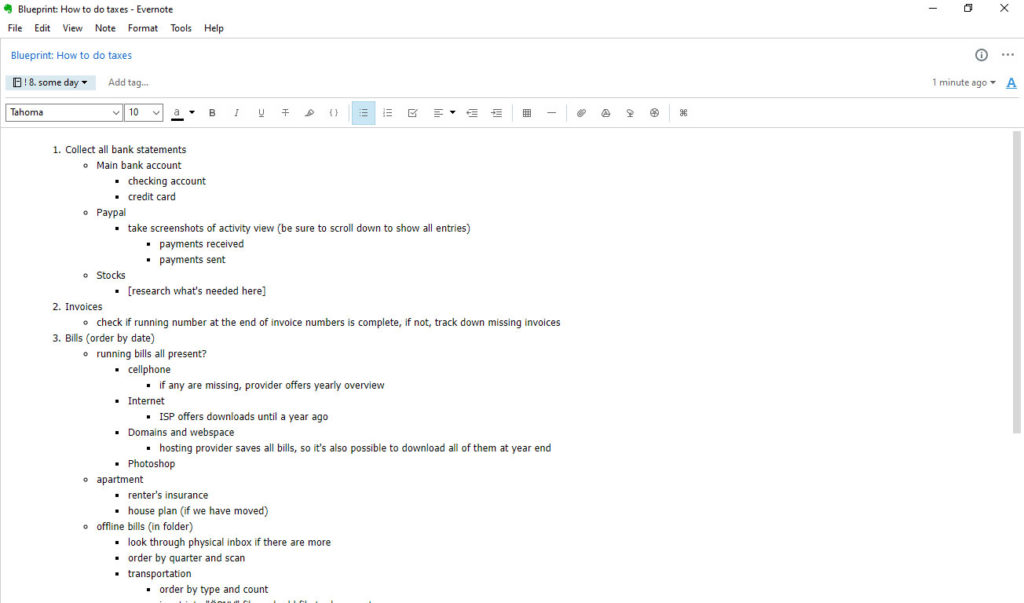
This saves me hours of time and tons of mental energy that I would usually spend on relearning the entire thing.
You can do this with other recurring tasks like publishing a blog post or regular services you provide to clients. In addition, you can make blueprints for other things like invoices, outreach emails, and featured images. That way, you only have to alter those things that change and you are done.
8. Single Task
Multitasking is a myth. There is enough research by now that shows we are not really multitasking but instead our brain is constantly switching back and forth between tasks. In addition, doing so uses more brain processing power than doing one thing at a time. Consequently, it seems multitasking actually reduces your productivity.
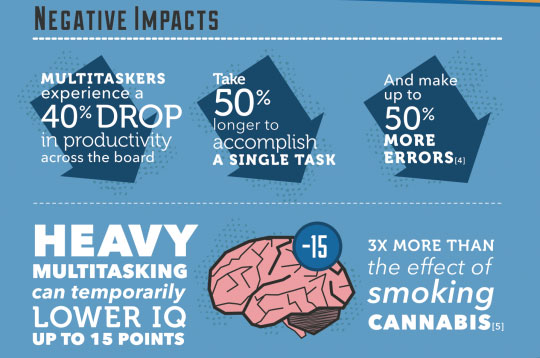
In the light of these findings, here is a radical proposal: stop. Stop trying to do several things at once and give your full attention only to a single task. Single tasking, is the best productivity tip I have for freelancers. It will make you feel less stressed and help you get things done faster and better.
If you are struggling with this, the aforementioned Pomodoro Technique is a great way to start. In addition, it helps to have a piece of paper next to you when working. If something pops into your head that you remember needs to be done, write it down. That way, it’s removed from your mind so you can stop thinking about it. At the same time, it does not get lost.
By the way, doing two tasks at the same time that don’t crowd each other out (like listening to music while working) is always allowed!
9. Break Down Tasks Into Smaller Parts
In my experience, procrastination often happens because a task ahead feels too difficult and overwhelming. The antidote to that is to break it down into smaller steps that you feel you can tackle.
For example, when I write a new blog post, I don’t set out to churn out a fully formulated article, complete with screenshots and impeccable grammar. Instead, I break down content creation into different phases:
- Research – Here’s where I read up on the topic, collect all the important information, and bring it into the right order. This is usually the part that takes the longest.
- Drafting – Here’s when I turn my research notes into a text. It won’t be ready for publishing by a long shot, I’m just shooting for volume and creating a coherent text.
- Editing – This is where the real writing work begins. Editing is when I polish the text, make it sound good, add any missing information, links, and overall finish the text.
- Visuals – The next phase is adding screenshots and other visuals like embedded videos or social updates. I have usually already marked the places where I want to add these during research and drafting. The WordPress image block makes this really easy.
- SEO – The last step is to make sure that the post is properly optimized for search engines. Here, I have a look at my SEO plugin and see if anything is missing. I also set an SEO title and meta description. Since I have a lot of practice creating optimized posts by now, this part is relatively short.
If you have broken down larger projects into smaller parts and it still feels overwhelming, try to combine it with time limits. So, for example, I will often put 3x20min of research on my to-do list. I am not planning to necessarily finish the entire work in that time but it gives me a quantifiable goal to shoot for. This makes it graspable and easier to accomplish.
10. Batch Similar Assignments
It’s usually faster to do the same task repeatedly than it is to perform different tasks in succession. This, too, probably comes down to the reduced mental cost of switching between assignments. For that reason, another good productivity tip for freelancers and entrepreneurs is to try and batch similar tasks and do them all at once.
One of the main ways I do this in my life is in the area of communication. I only check and answer my emails, social media, and blog comments twice a day. At 11am and 4pm, I go to my inbox, social profiles, and the comment sections of websites I am involved with. I actually have a folder containing bookmarks for these addresses in my browser task bar that allows me to open them all at once (Ctrl+left-click is your friend).

Then, I answer all of them one after the other until there is nothing left. If I have calls to make, I also try to schedule them during that time. The intervals are close enough so that everyone will feel like they are getting a timely answer. In addition, it frees up the rest of my time for other things and eliminates a lot of interruptions.
Another way of doing this is to collect all administrative tasks that pop up during the week (calling your bank, sending papers to the IRS, making doctor’s appointments, etc.) in a list and then do them all at once on a set day. For me, this day is Monday.
11. Delegate and Automate
The above productivity tips are all aimed at making freelancers more efficient at getting your work done. However, you know what’s even better than being really efficient at ticking things off your to-do list? Not having to do them in the first place! Your main tools here: delegating and automating.
Let’s start with the former. In every business there are some things that nobody else but you can do. Maybe only you possess the necessary skill or knowledge. Maybe it’s because you are the face of the company. Either way, that’s work that’s up to you, there’s simply no way around it.
However, for everything else, where it’s not crucial that you do a particular task, by all means pass it on to someone else! Especially if there are people who can do it better and faster than you. Yes, you might have to pay them for the pleasure (as in the case of my tax guy). However, if that frees up your time so that you can make more money than you are spending on it, that’s a great tradeoff!
Same with automation. There is plenty of technology that can take over at least some of your work. For example, I use Buffer to feed my social accounts.
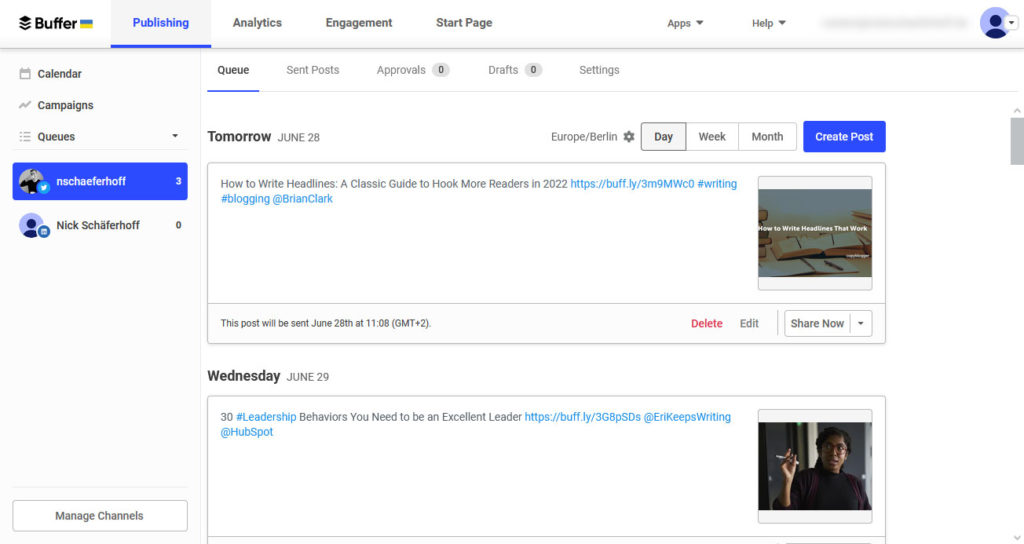
That way, instead of having to post something manually every day, I can simply sit down for an hour every two weeks or so and fill up the queue. The program will automatically publish whatever is in there in whatever schedule I have set up. Another, similar solution is Hootsuite. Plus, there are a ton of other things you can automate with services like Zapier and IFTTT.
12. Set Clear Boundaries
Boundaries are an essential part of life and being able to say “no” is an essential skill. If you don’t set limits on who can have how much of your time, you will not only never get anything done, it will also likely leave you frustrated, resentful, and tired.
This, too, could be an entire blog post by itself, so I won’t cover everything about boundaries in this small section. The short version is that boundaries are what you decide you will and will not do, put up with, tolerate, or engage in. The goal is to protect your energy, manage client relationships, and keep you in “productive but not burned out” territory.
What are examples for boundaries in business?
- Deciding when you are and aren’t reachable and by what medium, especially on holidays.
- Communicating deadlines and processes to clients so that they have a realistic understanding of what they can and can not expect.
- Deciding how many clients you will take on so that you can make sure you can serve them properly and also have a life outside of work.
- Stating when something is outside of the initially agreed scope and that it will cost extra.
- Agreeing on and adhering to a payment structure for work performed.
- Having arrangements with your family how to deal with work time so that you don’t get interrupted all the time.
You get the gist. However, the most important boundary you need to set is the one between work and the rest of your life. As a freelancer, blogger, or entrepreneur you can theoretically work all the time. That doesn’t mean you should. It’s up to you to set boundaries for when work time starts and when it ends.
13. Have a Regular Sleep Schedule
This is the first of several non work-related productivity tips that freelancers, entrepreneurs, and bloggers can benefit from. I probably don’t have to tell you how important sleep is. After just one night of insufficient shuteye, you can already feel the difference in energy, focus, and overall wellbeing. It gets even worse when it happens regularly.
Yet, most people don’t get enough sleep. In fact, statistically most of us are underslept and it has a huge impact not only on productivity but overall quality of life and health. From cardiovascular problems over hormone disruption to mental health issues, sleep deprivation comes with a high price. It can even make you obese.

If that sounds like it might apply to you, it might be time to have a look at your own sleep habits. There are many ways to improve your nightly rest:
- Avoid screens 1-2 hours before bed
- Avoid alcohol
- Don’t drink coffee late in the day
- Turn down the temperature in the bedroom
You can find more tips here.
Personally, the single most effective way that I have found to help myself fall and stay asleep is to go to bed at roughly the same time. Set a regular alarm in the morning and go to bed roughly nine hours before that. Reading in bed is allowed but only fiction! Try it out for a week and you should start noticing the difference.
Yes, it’s a bit boring, but it will help you feel good and be and stay productive.
14. Make Time for Friends and Family
In the same vein as sleeping enough, making time to socialize is another important non-work factor to keep you productive. Humans are social animals. If you isolate yourself too much, you might find that your overall mood, wellbeing, and performance suffers.
The Dangers of Loneliness
I do understand that you are trying to build something for yourself and that it takes sacrifice. I also know that that often means relinquishing social duties. Trust me, I have been there. I have lived that life. However, being by yourself for too long can often achieve the opposite of what you are aiming for.
In fact, studies liken the adverse health effects of loneliness to smoking 15 cigarettes per day. Though I couldn’t find the primary source for that exact number, the consensus is that being alone for an extended period of time is no bueno for both your physical and mental state. Therefore, it’s something you should take seriously. Especially because it’s an easy trap to fall into when working as a solopreneur from home.

I struggled with this especially during the pandemic. While I am used to working on my own and being alone most of the time during the week, I used to get my social fix on the weekend. When social distancing made that impossible, I quickly realized how much I was relying on face-to-face time for my wellbeing.
Don’t Be That Person
Seeing other people is a great way to take you out of the work mindset and bubble and think about other things and people for a minute. This is important to disconnect and recharge. Plus, getting some social comparison is a good way to check whether the standards you are holding yourself to might be a bit too high.
If you are struggling with getting yourself motivated for work, chances are you haven’t spent enough time socializing with people you care about. Give it a try, I promise it will only do you good.
15. Make Time for Fun and Joy
This goes in the same direction as the last point and can often be done in combination.
Many productivity tips for freelancers focus on creating more output. Yet, even if you have the strongest drive in world, at some point you will find that you can’t be productive all the time. Going full hog works for a while, yet, if you don’t pace yourself, you will fizzle out and struggle with burnout.
Of course, there are some exceptions. There are people who can work twelve hours a day, seven days a week without it affecting them. However, if you are reading this and think to yourself “I am that exception”, 99.9% of the time you are not.
So, to prevent yourself from running yourself into the ground, make sure that you have things in your life that work as a counterweight to productivity mode. What exactly that is, will be different for everyone. Maybe you like to go to the movies, take walks, play in a sports team, go for fancy dinners, have beer with friends, do yoga, play video games, read, or sit in the park — what shape it takes is up to you.
Just find something that allows you to disconnect and relax. Something that gives you that fuzzy feeling in your stomach that says “life’s not so bad after all”. If you can do that, it will translate into higher productivity and creativity when you do work, I promise.
Oh, and avoid falling into the trap of using workouts or running as your “downtime”. It’s too easy to fall into achievement mode here as well, which will negate the whole purpose.
16. Build Healthy Habits
Most of what we do in life is routine, stuff we do over and over again without really thinking about it. If you want to live a productive and enjoyable life, it’s a good idea to make sure that these routines work for you rather than against you.
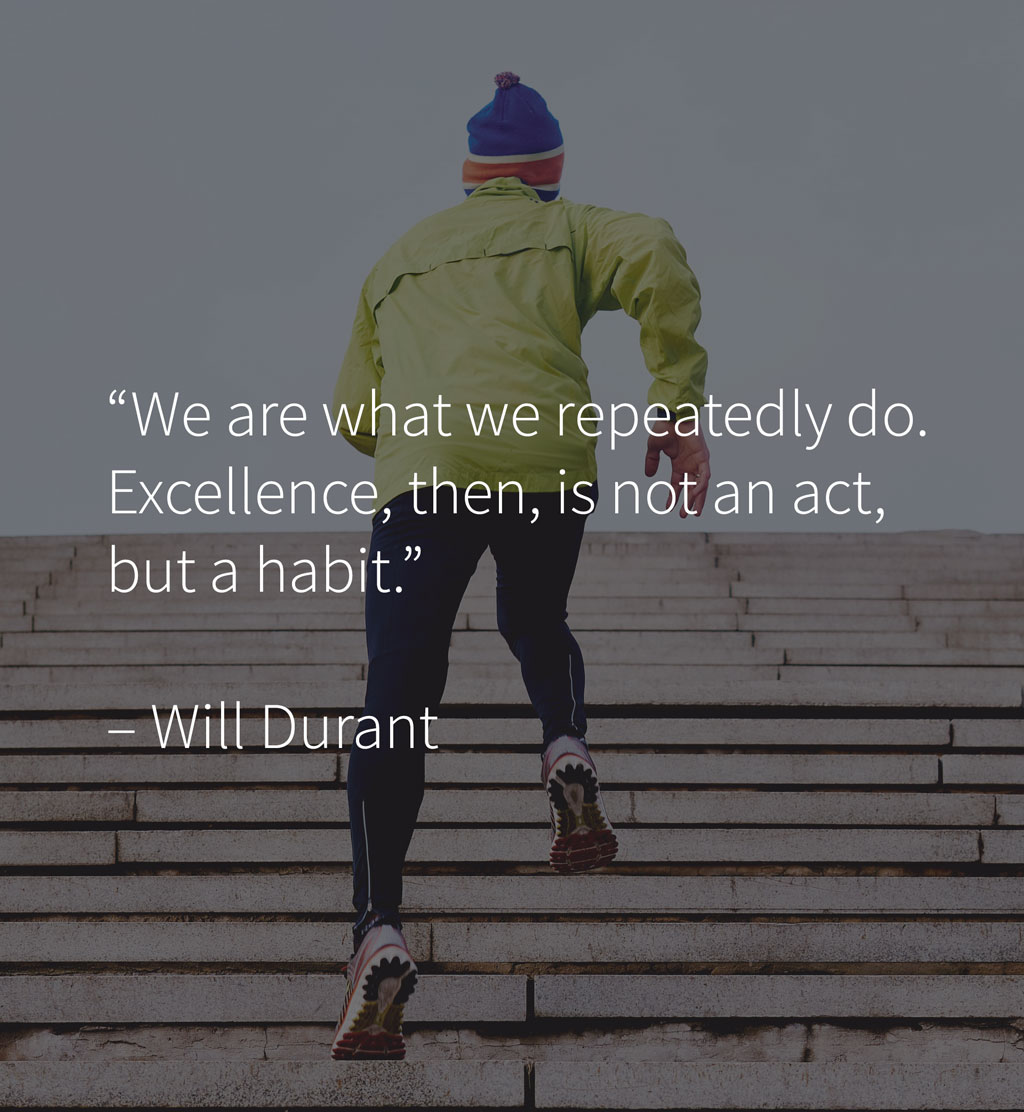
I already touched upon this when talking about sleep. But it also makes sense to look at other things you do routinely. Do you spend a lot of time on social media? Drink a lot of soda pop? Spend all your time sitting?
Have a look at which of your routines have the most negative impact on how you feel throughout the day. If you can identify and change or replace them with better habits, this will greatly impact your life and, in turn, your productivity.
I could write another entire article on habit building, but here are two important pointers:
- Change one thing at a time. If you try to alter too much at once, it’s more likely you will get frustrated and give up.
- In the beginning, consistency is more important than volume. So, start very small. Make your new habits something that you can complete very quickly. This reduces excuses not to do it. For example, I got myself to work out regularly by committing to five minutes every other day.
If you want to learn more about building habits, I can recommend Atomic Habits by James Clear and Leo Babauta’s website zenhabits.
17. Embrace Boring
Many people want to achieve great things in a short amount of time. They want to build a million-dollar business in a month, lose 30 pounds in a week, become confident overnight, and overhaul their entire life from one moment to the next.
Sure, some people can do this (usually under extenuating circumstances, like a scary medical diagnosis) but most of us change things slowly over time. Of course the alternative makes for better headlines (“see how [person] achieved [impressive thing] in [incredible time frame]”) but in the end, success comes from mostly boring, repetitive tasks.
It’s the daily writing habit, the consistent client outreach, the regular website maintenance, sitting down to do your budget, etc. None of that is glamorous and headline worthy. However, it does get the job done to move yourself toward your long-term goals.
So, instead of aiming for radical changes, shoot for small daily improvements and slowly scaling the mountain. It’s more sustainable in the long run than full-on, gung-ho maximum efforts. The key is to be fine with that and enjoy the process rather than constantly wanting to get to the end goal.
18. Get Accountability
Anyone who has ever tried to adhere to a diet, workout plan, or self-imposed work schedule knows that self-discipline is hard. You only have so much willpower. Push yourself too hard you will use it up in no time.
That’s when the excuses start to come in and when you start talking yourself out of what you were planning on doing. After all, there is always tomorrow, the weather is so nice today, and isn’t there a new show on Netflix? Plus, all these pesky emotions, like “not-feeling-like-it-right-now”, etc. Soon you find yourself binging YouTube videos and feeling crappy about yourself.

You know who doesn’t have these issues around your plans? An impartial third party. Someone who you make a commitment to and who checks on your progress. In short, an accountability buddy.
Accountability is one of the strongest motivators you can create for yourself. Having to admit to someone that you failed to go through with your plan and explain why is super uncomfortable. Which is the reason most people want to avoid it more than they want to avoid the original thing. Talk about positive social pressure.
So, if you are struggling with productivity as a freelancer, blogger, or entrepreneur, one of the best tips is to find an accountability buddy. You can join a group of like-minded individuals on a similar path or sign up to an accountability app. Find someone who will hold you to your word, make a public commitment, then do the work.
What Are Your Favorite Productivity Tips?
Staying productive as a freelancer, blogger, or entrepreneur can be a challenge. The lack of external structure comes with its own set of challenges. It’s something that you have to get used to and need to find ways to deal with constructively in order to thrive.
The good news is that there are plenty of things you can do to help yourself in this regard. From working in sprints over setting goals, simplifying, batching, and automating tasks to making sure that you have a life outside of work, there are many tools at your disposal.
The productivity tips above are a good start to give yourself a leg up in the strife for working for yourself without hating your life. Not everything will work for you the same way as it does for me. Take what makes sense to you and make adjustments according to your own situation and disposition.
Being productive is as much about getting to know your own needs as it is about finding ways to work smarter. Combined, it is what will help you become and stay productive.
Are you a freelancer, blogger, or entrepreneur struggling (or thriving) with productivity? What are your favorite tips? What do you most struggle with? Let’s help each other out in the comment section!

Leave a Reply